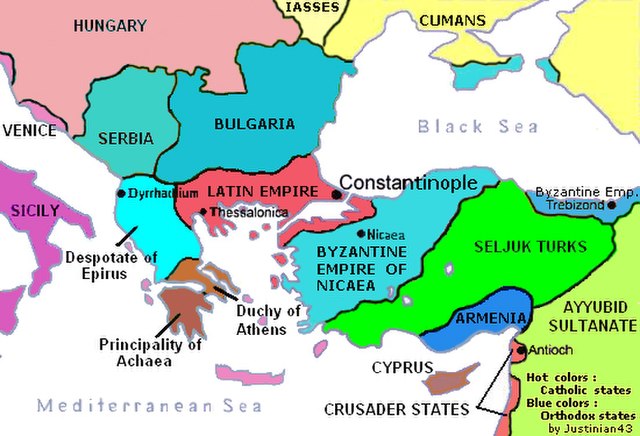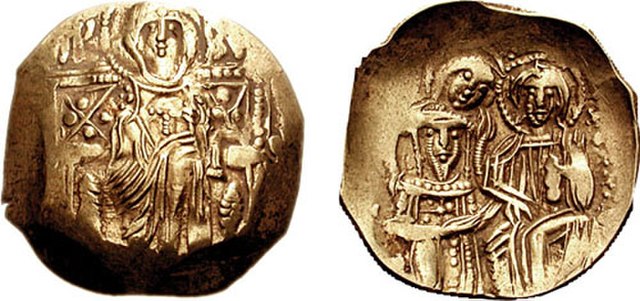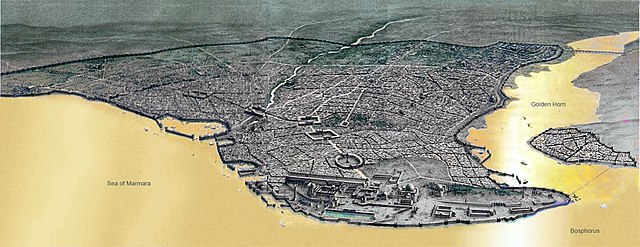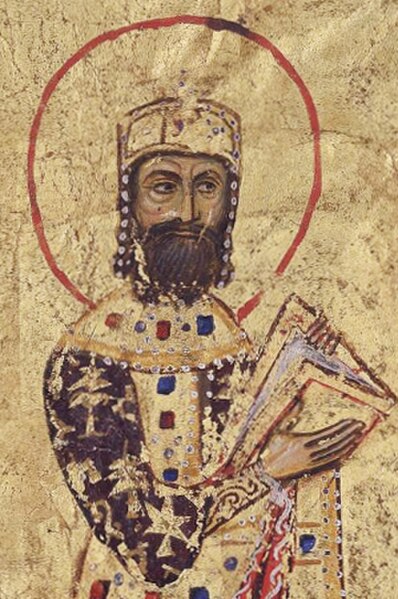Byzantine Empire under the Palaiologos dynasty
The Byzantine Empire was ruled by the Palaiologos dynasty in the period between 1261 and 1453, from the restoration of Byzantine rule to Constantinople by the usurper Michael VIII Palaiologos following its recapture from the Latin Empire, founded after the Fourth Crusade (1204), up to the Fall of Constantinople to the Ottoman Empire. Together with the preceding Nicaean Empire and the contemporary Frankokratia, this period is known as the late Byzantine Empire.
After 1204, the Byzantine Empire was partitioned between various successor states, with the Latin Empire in control of Constantinople
Hyperpyron of Michael VIII
Andronikos II's debasement of the Byzantine currency, along with his co-rule with his father, his son and his grandson as well as his own sole rule, resulted in the minting of several different coins during his reign.
Byzantium (in red) in 1369, after the Ottomans conquered the city of Adrianople
The Byzantine Empire, also referred to as the Eastern Roman Empire, was the continuation of the Roman Empire centered in Constantinople during Late Antiquity and the Middle Ages. The eastern half of the Empire survived the conditions that caused the fall of the West in the 5th century AD, and continued to exist until the fall of Constantinople to the Ottoman Empire in 1453. During most of its existence, the empire remained the most powerful economic, cultural, and military force in the Mediterranean world. The term "Byzantine Empire" was only coined following the empire's demise; its citizens referred to the polity as the "Roman Empire" and to themselves as "Romans". Due to the imperial seat's move from Rome to Byzantium, the adoption of state Christianity, and the predominance of Greek instead of Latin, modern historians continue to make a distinction between the earlier Roman Empire and the later Byzantine Empire.
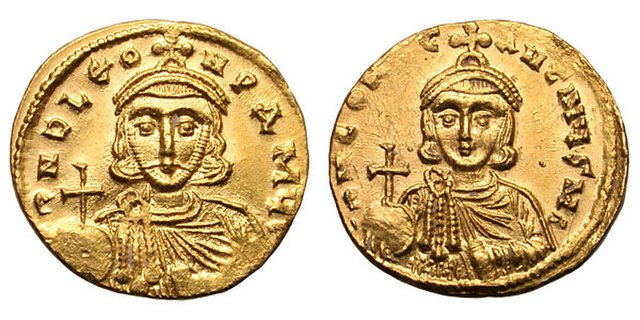
Gold solidus of Leo III (left), and his son and heir, Constantine V (right)
Constantinople was the largest and wealthiest city in Europe throughout late antiquity and most of the Middle Ages until the Fourth Crusade in 1204.
The seizure of Edessa (1031) by the Byzantines under George Maniakes and the counterattack by the Seljuk Turks
Alexios I, founder of the Komnenos dynasty

